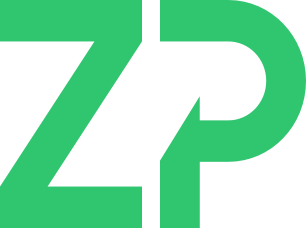The Internet-of-Things (IoT) is a catch all for the connectivity between objects in the real world, and services and applications hosted on the web. The IoT provides greater utility to the users and offers new and expanded revenue stream to the providers, including a change in business model from CAPEX to OPEX with its more predictable revenue streams.
At Zimmer and Peacock, we are driven by IoT, but from the perspective of sensors, and specifically sensors that are selective: to chemistry, biochemistry and biology. The analytes that ZP are interested in includes glucose, microbes, lactate, nitrate, phosphate, potassium etc. We believe that some of the most valuable data stream are those that are hard to continuously monitor and have biology and chemistry at the heart of them, this includes: glucose in diabetics, the nitrates in soil, legionella in buildings or the wellbeing of athletes.
Examples of IoT applications driving us at ZP includes:
SMART BUILDINGS – One of the biggest concerns for anyone responsible for a public building is Legionella Disease. The issue is that the Legionella bacteria can proliferate within the building’s water systems and if it becomes an aerosol and inhaled can lead to deaths. In many countries there is strict legislation in place for routine tap-testing, where a water sample is taken and analysed off-site of, but despite this deaths still occur. Several companies have attempted an IoT solution for the detection and alerting of Legionella risk, including biofilm detection and temperature profiling, but a sensor specific to the Legionella bacteria constantly in place within the water system has not been commercially realized. ZP has the inhouse expertise to help partners develop whole cell pathogen detection – read more.
AGRICULTURE – There are several technologies that pertain to allow the farmer to know how much fertiliser to apply to their fields, but these often rely on monitoring the plants growing tissue and looking at the chlorophyll within the plant and correlating this with the nutrients in the soil; the issue with these technologies is that they are a retrospective analysis of the soil and by the time a plant is showing stress it is a too late for the farmer to take real action. The IoT solution is that a farmer should be able to continuously, remotely and directly monitor the current soil chemistry , specifically: nitrate phosphate and potassium. Knowing the levels of these nutrients in a continuous manner allows the agronomist and the farmer to apply fertilisers precisely and to avoid excess fertilisers and the consequences of pollution from the over application of fertiliser – read more.
FOOD PRODUCTION – Many produced foods are made from a series of raw ingredients which are by nature variable, including: fruits vegetables, dairy etc. The quality systems in food production have historically been based on organoleptic testing (taste and smell testing), but the distributors and supermarkets are driving for better measurable quality tests. Therefore, rapid food quality tests in production that are IoT connected can provide objective quality data as opposed to subjective organoleptic testing – read more.
AQUACULTURE – If we look at salmon farming then salmon has historically been a quality product, but there have been increasing concerns about the pesticides, heavy metals etc, entering the stock via the feed and the environment. What is required are biochemical sensors that can check the feedstock and the marine environment and can help protect the stock and the industry’s reputation. The data from this testing needs to be part of the IoT enables so that product can be tracked from fjord to fork – read more.
MEDICAL and WELLNESS – One of the most valuable data streams is people’s biochemical data, be it glucose readings in diabetics or lactate in elite athletes. The continuous glucose monitoring of diabetics (CGM) is now a maturing market, with three main players and a host of start-up looking to join the market. What CGM has done for the wearable device market is prove that there is a medical and business case to the monitoring of people’s biochemistry and so this is now expanding out to other applications.
There is a bigger market in parallel with medical wearables, which includes wellness and athlete performance monitoring – click here.
SCIENTIFIC AND LABORATORY MONITORING – The IoT is already migrating into laboratories. Lab service companies are partly supporting their service agreements by bringing connected lab equipment to the internet so that they can remotely monitor the status of lab equipment. In effect they are driving down the costs of service visits whilst increasing the up time of their customers equipment. An example is the continuous condition monitoring of freezers within the biopharmaceutical industry, it is not unusual to have thousands of euros/dollars’ worth of products in these freezers and one malfunction over a weekend can results in a large loss of the temperature sensitive stocks and stores.
The IoT concept is migrating into the actual experiments, with several companies now providing condition monitoring sensors within experiments such as cell culture and bioreactions. The move of IoT into the experiments is due in part to the lack of reproducibility of biology papers by the biopharma industry. A seminal paper reported that the majority of biology papers from peer-reviewed journals, were simply not reproducible. The lack of reproducibility has been in part ‘blamed’ on the uncertainty of conditions within biology experiments, the types of biochemistry conditions that would be interesting to biologists includes glucose, lactate, pH, carbon dioxide and oxygen – read more.
Though we have listed several applications in this note, a careful read through shows that though the applications are variable there is a core of common analytes which keep on re-occurring, including: pH, glucose and lactate. At Zimmer and Peacock we are cognisant of the diversity of applications but also in the commonality in the biochemical sensors required.
If you have an IoT application and are looking for a company with sensing and application expertise, please don’t hesitate to contact ZP.

